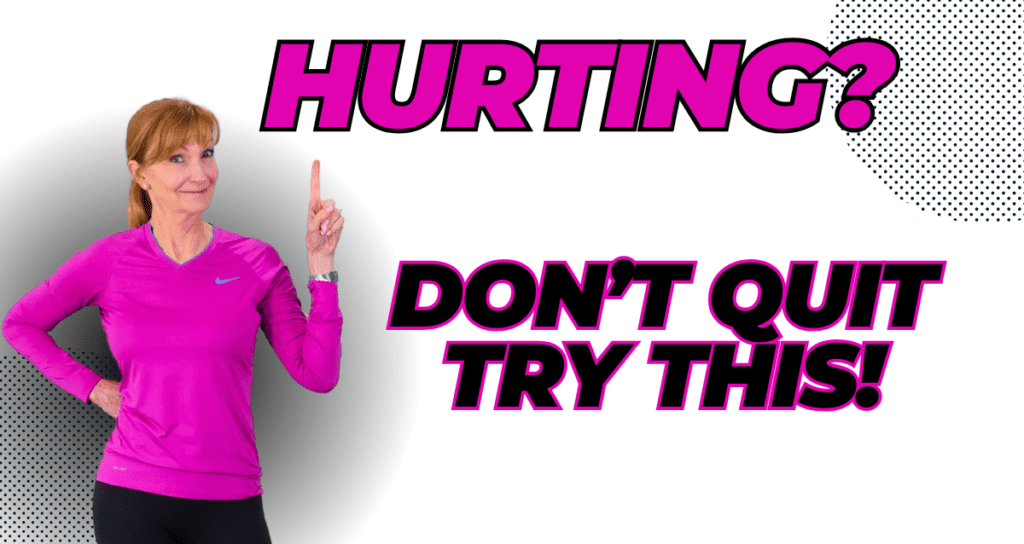What to Do When Something Starts Hurting—Without Giving Up on Exercise

Let’s be real—aches and pains happen. And when they do, it’s easy to think, “Maybe I should stop working out altogether.” But for women over 50, movement isn’t just important—it’s essential. The trick is knowing what kind of movement is right when something hurts and how to adjust without giving up entirely.
So, what should you do when a joint starts acting up or an old injury flares? Let’s talk about how to listen to your body, move smart, and stay active without making things worse
First, Know the Difference Between “Good Pain” and “Bad Pain”
Not all pain is created equal! Some discomfort is totally normal (even a sign that your body is getting stronger), while other pain is a red flag.
Here’s how to tell the difference:
✅ Good Pain:
- Mild soreness in the muscles
- Feels better with movement or a warm-up
- Shows up a day or two after a workout (delayed onset muscle soreness—DOMS)
❌ Bad Pain:
- Sharp, stabbing, or pinching sensations
- Joint pain (especially if it lingers or swells)
- Pain that gets worse during a workout
- Numbness, tingling, or radiating pain
Bottom line: If something doesn’t feel right, don’t push through it!
R.I.C.E. vs. Movement: What’s Best?
The old-school R.I.C.E. method (Rest, Ice, Compression, Elevation) is still helpful immediately after an injury, especially if there’s swelling. But once that initial inflammation goes down, gentle movement is usually better than total rest.
Movement helps:
- Improve circulation
- Reduce stiffness
- Prevent muscle atrophy
- Boost your mood and energy
The key is choosing the right movement—low impact, slow, and focused on form.
Find the Right Balance: Not Too Much, Not Too Little
It’s tempting to either push through pain or stop altogether. But what your body really needs is something in the middle.
Try this balanced approach:
- Take 1–2 days off when pain flares
- Start back with gentle mobility work or stretching
- If that feels OK, add in light strength work (using modifications!)
- Monitor how you feel the next day before adding more
This is why I always say: modifying is not cheating—it’s smart.
Need Help Knowing Where to Start? I’ve Got You.
That’s exactly why I created the Get Moving, Feel Better Series inside the Be Healthy Enough Membership.
This video series gives you a 3-level recovery plan for knees, low back, shoulders, and elbows—designed to help you:
✅ Ease stiffness
✅ Regain strength
✅ Safely return to your regular workouts
And if you haven’t already, be sure to download the Pain-Free Exercise Guide for Women Over 50—it’s packed with tips just like these, all designed to help you keep moving and feel better, even when something hurts.
👉 Grab your free guide here and let’s take the next step together.
